Table of Contents
Discover the essential electrician tools list for precision, durability, and safety in electrical engineering. Explore 25+ must-have tools, tips for tool organization, and efficient storage solutions to elevate your electrical work.
A. Introduction of Electrician Tools

✔ Electrician tools are the special technological equipment and instruments professionals use to install, maintain, and repair electrical systems, wiring, and circuits.
✔ These tools are organized to be safe and efficient, enabling electricians to finalize their work accurately and expeditiously.
✔ They come in hand-held and power varieties and serve various purposes, including cutting and stripping wires, testing circuits, and ensuring safety.
✔ In core, electrician tools are compulsory for the successful execution of electrical installation, maintenance, troubleshooting, and repairs.
B. 40+ Electrician Tools List
| Names | Images | Uses |
| 1. Tape Measure |  | ✔ used to measure distance or size. |
| 2. Electrical Tape | 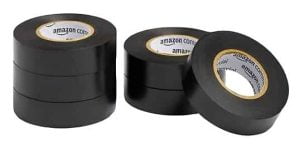 | ✔ Used to cover and insulate various cables, wires, and other materials that conduct electricity. |
| 3. Cable Ties | 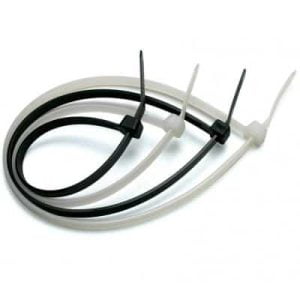 | ✔ Used for holding items together, most commonly electrical cables or wires. |
| 4. Solder Capillary Lead-Free Wire |  | ✔ Used to produce perfect joints quickly and effectively. |
| 5. Electric Drill |  | ✔ Used for drilling circular holes in the material. |
| 6. Level |  | ✔ Used to determine whether a surface is horizontal (level) or vertical (plumb). |
| 7. Wire/Cable Lugs |  | ✔ Used for connecting cables to electrical appliances, other cables, surfaces, or mechanisms. |
| 8. Super Fire 2 Torch |  | ✔ Used for soldering and brazing. |
| 9. Coax Connector |  | ✔ Used for connecting cables to electrical appliances, other cables, surfaces, or mechanisms. |
| 10. Flux Brush |  | ✔ Used in connections that are joined together by soldering. |
| 11. Wire Strippers |  | ✔ Used for removing the protective coating of an electric wire to replace or repair the wire. |
| 12. Fish Tape |  | ✔ Used for pulling electrical or other wires through conduits. |
| 13. Hacksaw |  | ✔ Used for cutting thin metal such as aluminum, brass, steel, or copper. |
| 14. Pliers |  | ✔ Used for gripping. |
| 15. Fishing Rods |  | ✔ Used to install wires above ceilings, in attics, through walls, etc. |
| 16. Terminal Block |  | ✔ Used to secure and terminate wires |
| 17. Voltage Tester |  | ✔ Used primarily on AC currents, although some can also be used on DC currents. |
| 18. Crimpers |  | ✔ Used to make cold weld joints between wires and a connector by deforming one or both to hold the other. |
| 19. Gloves |  | ✔ Used to protect and comfort hands against cold or heat, damage by friction, abrasion or chemicals, and disease |
| 20. Line Tester |  | ✔ used to test current presence and identify phase / live wire in electrical installations. |
| 21. Reaming Bit |  | ✔ Used as a cutting tool. |
| 22. Conduit Bender |  | ✔ Used to bend electrical pipes for installation. |
| 23. Goggles |  | ✔ Used to shield the eyes against liquid or chemical splash, irritating mists. |
| 24. Heat Shields/Pads |  | ✔ Used to protect objects from overheating. |
| 25. Stubby screwdriver |  | ✔ Used to facilitate access to screws located in areas that cannot be reached easily by a regular screwdriver. |
| 26. Flashlights |  | ✔ Used to provide a source of light at a time of night. |
| 27. Rescue Rod/Hook |  | ✔ Used to remove persons incapacitated by electrical shock from the danger area. |
| 28. Screwdrivers | 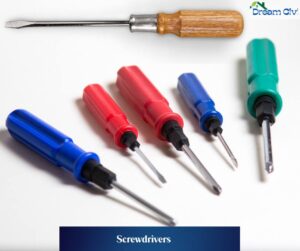 | ✔ Used for the insertion and removal of screws. |
| 29. Wrenches |  | ✔ Used for gripping, fastening, turning, tightening, and loosening things like pipes, pipe fittings, nuts, and bolts. |
| 30. Hammer | 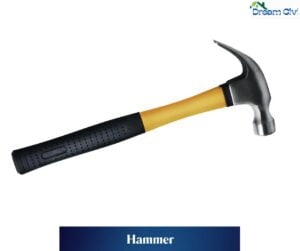 | ✔ Used for driving, shaping, and breaking. |
| 31. Utility knife | 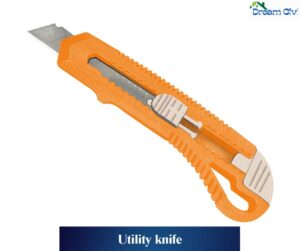 | ✔ Used for cutting. |
| 32. Multimeter |  | ✔ Used to measure multiple electrical values. |
| 33. Ground fault circuit interrupter (GFCI) tester |  | ✔ Used for testing GFCI breakers. |
| 34. Sandpaper |  | ✔ Used for light sanding between coats. |
| 35. Hot Air Blower |  | ✔ Used for cleaning machines and devices and drying water traces or coatings. |
| 36. Variety of Screwdrivers & Wrenches |  | – |
| 37. Allen Wrench Set (Hex Set) |  | ✔ Used to tighten or loosen hexagonal-shaped bolts and screws. |
| 38. Cordless Power Drill Driver Kit | 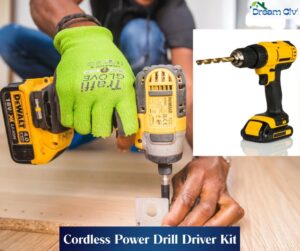 | ✔ Used to drill holes in metal, plastics, wood, and stone, as well as drive screws with an electric screwdriver. |
| 39. LED Headlamp |  | ✔ Used to increase visibility. |
| 40. Magnetic Parts Tray |  | ✔ Used to collect screws, nuts & bolts, etc. |
| 41. Multi-Hole Step Bit |  | ✔ Used to cut holes in aluminum or steel electrical panels. |
| 42. Hole Saw Kit |  | ✔ Used to saw holes, especially on Gypsum and soft things. |
| 43. Soldering Iron |  | ✔ Used for soldering wires together. |
| 44. Ratcheting Cable Cutter |  | ✔ Used for cutting communication cables up to 85mm in diameter. |
| 45. Conduit Lubricant |  | ✔ Used to reduce the friction of a cable while pulling into a conduit |
C. Electrical Tool Storage and Organization
✔ Choose the right tool storage solution to fit your tool types and portability needs.
✔ High-quality tool storage products keep tools safe and long-lasting.
✔ Organizing tools by type makes them easier to find and use.
✔ Labeled tools are easier to find and keep track of.
✔ Putting tools back in storage after use keeps them safe and organized.
✔ Multiple compartments keep tools organized and separate.
✔ Foam inserts or dividers keep tools in place and prevent damage.
✔ Consider a tool belt for easy access during work.
✔ Wall-mounted organizers or pegboards can store extensive tool collections efficiently.
✔ Labeled storage solutions make tool retrieval faster and easier.
✔ Regular cleaning and inspection keep tools in good condition.
| Read Also: Plumbing Tools List |
| Verified by: Er. Bipana Kshetri Puri |

